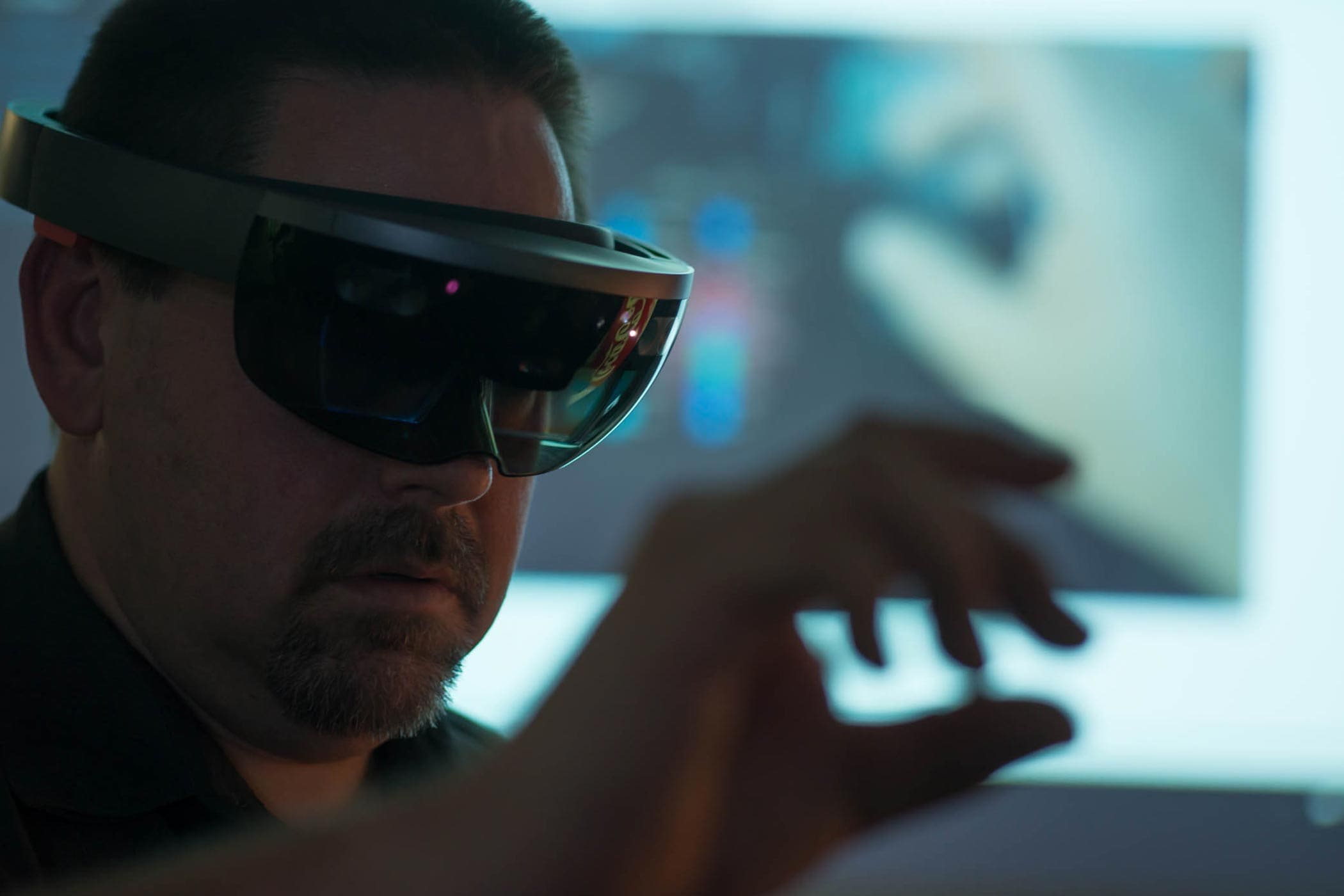{{item.title}}

Key takeaways
Virtual reality (VR) and augmented reality (AR) are changing the way we communicate. The ability to alter someone’s perception of reality by way of immersive experience has introduced a new dimension to communications; one that’s potentially more memorable and engaging than ever before.
This presents some exciting opportunities for organisations looking to up the ante on their communications.
While often referred to in the same breath, these innovative tools are distinct from one another.
Augmented reality is a live view overlaid with information. For instance, consider a consumer who wants to know the nutritional value of a meal. In this scenario, the consumer holds a device (typically their mobile phone) over the meal and its nutritional information appears on the screen. Mobile apps such as Calorie Counter and Fooducate offer this kind of capability right now.
Virtual reality offers a different, immersive experience. By donning screen-like glasses, an individual’s vision becomes completely controlled. Behind a VR lens, individuals can be transported to any time, any place – real or fictional. VR can take a user to the top of Mount Kilimanjaro without leaving the convenience of their home.
The rate at which VR and AR are evolving means that there remains plenty of uncharted territory for how they might be effectively utilised by businesses. One use case that’s already become apparent is in creative communications (this is one of three use cases for enterprise identified in a recent white paper).
Creativity and storytelling play a major role in the design of engaging communications experiences, and ones that drive overall brand awareness, comprehension and engagement. However when employing visual tools to communicate, there’s no single solution. We encourage clients to expand their options and consider all formats available. Traditional or emerging, physical or digital, experiential, virtual or augmented – the approach must be tailored to the communication challenge, audience and content at hand.
Whilst virtual and augmented reality offer great opportunities, corporations and communications professionals need to be wary of getting swept up in technology hype and running with such tools simply because they can.
Rather, organisations should think strategically about the efficacy of AR or VR within their business environments. How will these tools enrich their particular brand, or their customer or employee’s experience? Will they enable important messages to cut through surrounding clutter more efficiently, with greater clarity or speed?
One of the reasons for selecting virtual or augmented reality content to convey a message is that it imbues movement into a narrative. Just as visuals can add new layers of meaning to text, motion brings new depth to visuals.
Motion tends to heighten our emotional responses to images. In a study comparing how participants respond to moving and still images, researchers found that picture motion significantly increased arousal. Positive images were also experienced as more positive and negative images as more negative when motion was introduced¹.
Of course, a video can easily convey motion. But what virtual reality does differently is immersion. The user can actually feel like they’re in the narrative, whatever space that may be. This can create greater feelings of empathy than other mediums.
Both virtual and augmented reality can help convey complex data in a more understandable, engaging and memorable way.
Imagine, for example, holding a screen over a two-dimensional map. Augmented reality could enhance the map with 3D visuals indicating a range of data, allowing the user to ‘walk around’ the area and absorb a greater depth of understanding.
Adding movement to content enables the controlled timing of information. Known as Predictive Coding², our brains actively predict what inputs are ahead, rather than passively processing information as it arrives. Controlling the sequence and tempo of visual information therefore heightens curiosity and engagement in the unfolding narrative.
Communicators need to be eager to innovate and open to embracing the potential of these incredible visual tools. VR enables meaningful experiences, and these meaningful experiences are powerful weapons for change that come with the potential to evoke deeply personal and emotional responses from the user.
If you want your audience to think, feel or do something in response to your imagery, design visuals accordingly. In the age of the #selfie, people are craving something that speaks to them personally. The ability to take individuals to a particular place, and to a particular time, will inevitably alter the way we communicate with one another.
For more tips and trips on the power of visual communications, visit PwC’s The Difference – Creative Comms microsite here. Download a copy of The Power of Visual Communication here.
References

© 2017 - 2026 PwC. All rights reserved. PwC refers to the PwC network and/or one or more of its member firms, each of which is a separate legal entity. Please see www.pwc.com/structure for further details. Liability limited by a scheme approved under Professional Standards Legislation.
